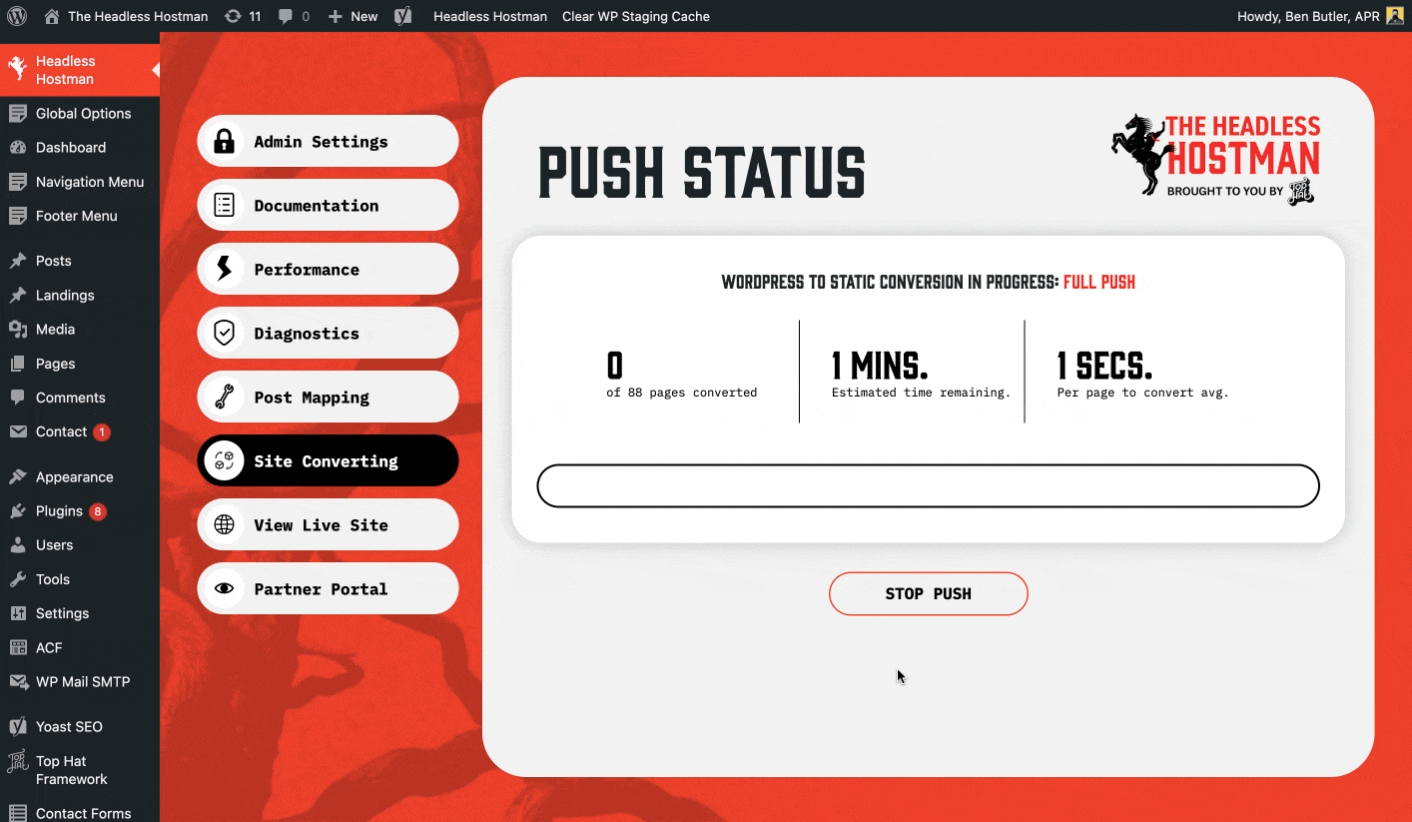Perfmatters vs SG Optimizer: Do They Actually Fix the Problem?
If you’re comparing Perfmatters vs SG Optimizer, chances are your WordPress site feels bloated.
Maybe your Core Web Vitals are suffering. Maybe your Lighthouse scores look more like a warning sign than a badge of honor. Either way, you’re chasing speed — and both of these tools promise it.
But how do they actually work? What’s happening under the hood? And more importantly — are they solving the real issue?
SG Optimizer: Built for SiteGround, With Limits
SG Optimizer is a performance plugin developed specifically for users of SiteGround hosting. It’s deeply integrated with SiteGround’s infrastructure and aims to help users maximize their hosting stack.
How SG Optimizer Works
SG Optimizer leverages server-level integrations, which is its primary strength. Here’s what it offers:
- Dynamic Caching – Tightly integrated with SiteGround’s NGINX-based dynamic caching system.
- Memcached Support – Adds object caching for faster database response times.
- GZIP Compression – Reduces file sizes for faster transfer.
- Browser Caching – Instructs the browser to save static assets locally.
- Frontend Optimization – Minifies HTML, CSS, and JS. Defers render-blocking resources, removes query strings, and loads Google Fonts asynchronously.
- Image Optimization – Compresses images and enables WebP conversion. Supports lazy loading.
The plugin connects directly with SiteGround’s server-side tools, which makes it faster than most all-in-one performance plugins — but also tightly coupled to that ecosystem. You leave SiteGround? You leave SG Optimizer behind.
Strengths of SG Optimizer
- Deep integration with hosting stack (dynamic caching, Memcached)
- Simple interface for non-technical users
- Automatic image compression and WebP generation
Weaknesses of SG Optimizer
- Requires SiteGround hosting
- Minimal customization for advanced devs
- Doesn’t handle script scheduling or delay very well
- Can’t replace broader site structure optimizations
Perfmatters: Lean, Precise, and Manual
Perfmatters takes a different approach. It’s designed to be lightweight and precision-focused. Instead of running automatic optimizations, Perfmatters lets you surgically disable what WordPress loads — helping you trim bloat at the root.
How Perfmatters Works
Perfmatters focuses on front-end performance, particularly things WordPress loads by default that you probably don’t need:
- Script Manager – Disable specific scripts and styles on a per-page or site-wide basis.
- Asset Unloading – Prevent plugins (like Contact Form 7 or WooCommerce) from loading site-wide when only needed on one page.
- Delay JavaScript Execution – Postpones non-critical JS until after user interaction (massively helpful for Core Web Vitals).
- Preconnect and DNS Prefetch – Helps browsers prepare for external requests before they occur.
- Disable WordPress features – Emoji scripts, embeds, REST API links, WooCommerce cart fragments, heartbeat API, and more.
- Minimal CSS/JS Minification – Basic minify options are included, but not the focus.
Perfmatters is incredibly effective in experienced hands, but it relies on you knowing which scripts to delay, disable, or load conditionally. That power comes with responsibility — and it doesn’t “just work” out of the box for beginners.
Strengths of Perfmatters
- Unparalleled control over assets and scripts
- Plugin-agnostic — works with any theme or stack
- Optimized for Core Web Vitals improvements
Weaknesses of Perfmatters
- No caching — you’ll need another plugin for that
- Relies on user knowledge to configure effectively
- Not ideal for non-technical teams
Perfmatters vs SG Optimizer: So, Which One Wins?
If you’re choosing between Perfmatters vs SG Optimizer, it really depends on your context:
- Are you hosted on SiteGround? SG Optimizer gives you a well-rounded performance boost with minimal configuration.
- Do you want full control, regardless of host? Perfmatters gives you surgical precision and better Core Web Vitals control, especially when paired with a caching layer.
But here’s the catch: both are just band-aids.
The Problem Isn’t the Plugin. It’s the Platform.

Both Perfmatters and SG Optimizer are trying to help WordPress load faster. But they’re patching symptoms, not solving the root cause.
The real bottleneck is the fact that WordPress is dynamic. Every time a page loads, your server assembles it on the fly: querying the database, loading plugins, rendering PHP templates. This takes time. Sometimes 500ms+ even on a WP Engine Server. And that’s before the first byte even hits your browser.
You can’t optimize away the fundamental nature of WordPress. You can only replace it with something better.
Headless Hostman: Fixing the Real Problem at the Root
At Headless Hostman, we took a different approach: make WordPress faster by eliminating what makes it slow — the dynamic loading layer.
With us, your WordPress site becomes static. We convert it to raw HTML and push it globally over Cloudflare’s edge network. Pages are delivered instantly, with no server-side processing.
And the best part? It’s turnkey and ready for you without any sacrifices.
Our average Time to First Byte (TTFB) is under 180ms. That’s over 2x faster than most hosts, including SiteGround, WP Engine, or Kinsta even with optimization plugins in place.
Introducing the Hostman Performance Suite
Lightning-fast rendering is just the beginning. We also built our own integrated performance tools which make things even faster.
Why? Well, because at the end of the day Google Page Speed is looking at how well your HTML is optimized, not necessary just how fast the site actually renders.
It’s a fact of life.
Here’s What the Performance Suite Does to Help That:
- Extracts critical CSS – For faster first paint and improved perceived load times.
- Defers non-essential stylesheets – Loads styles only when needed to reduce render-blocking.
- Removes Gutenberg bloat – No extra stylesheets from blocks you’re not using.
- Lazy-loads images and media – Smart, native lazy loading across your site.
- Preloads key images – Ensures important visual elements appear instantly.
- Converts CSS backgrounds to
<img>tags – Helps browser prioritize important media. - Injects width and height attributes – Prevents layout shifts and stabilizes rendering.
- Minifies HTML – Removes whitespace, comments, and bloat server-side.
- Defers below-the-fold content – Boosts Largest Contentful Paint (LCP) scores automatically.
And we do all of this during Static conversion.
And Let’s Make it Clear: We Make Static WordPress Easy

If you’re familiar with Headless WordPress, you might have tried it in the past and given up. We don’t blame you.
We made it drop-dead simple.
- You migrate your site to us. Easy onboarding. Same WordPress admin you’re used to.
- We enable our Static Conversion Tool. It lives in your WordPress dashboard. No third-party tools or command-line setup.
- You click “Push.” Whether it’s one page or the entire site, our system generates static HTML and deploys it globally via Cloudflare.
- You’re done. Your site is fast, secure, and runs without needing to rebuild it in JavaScript.
That’s it.
Stop Patching WordPress. Start Fixing It.
Perfmatters and SG Optimizer can give your site a boost, but they’re still fighting upstream. They optimize the dynamic process instead of eliminating it altogether.
If you want real performance, simpler infrastructure, and better results, stop stacking plugins. Switch to Headless Hostman and convert your WordPress site to static — without giving up your theme, builder, or plugins.
Under 180ms. No caching plugin required. Just click “Push.”
WordPress. Reimagined.
Deeper into the Abyss


